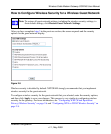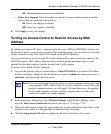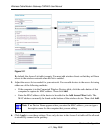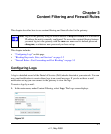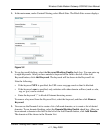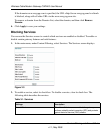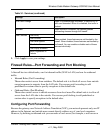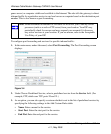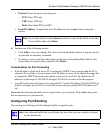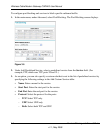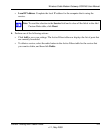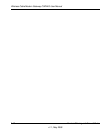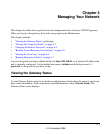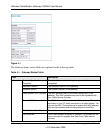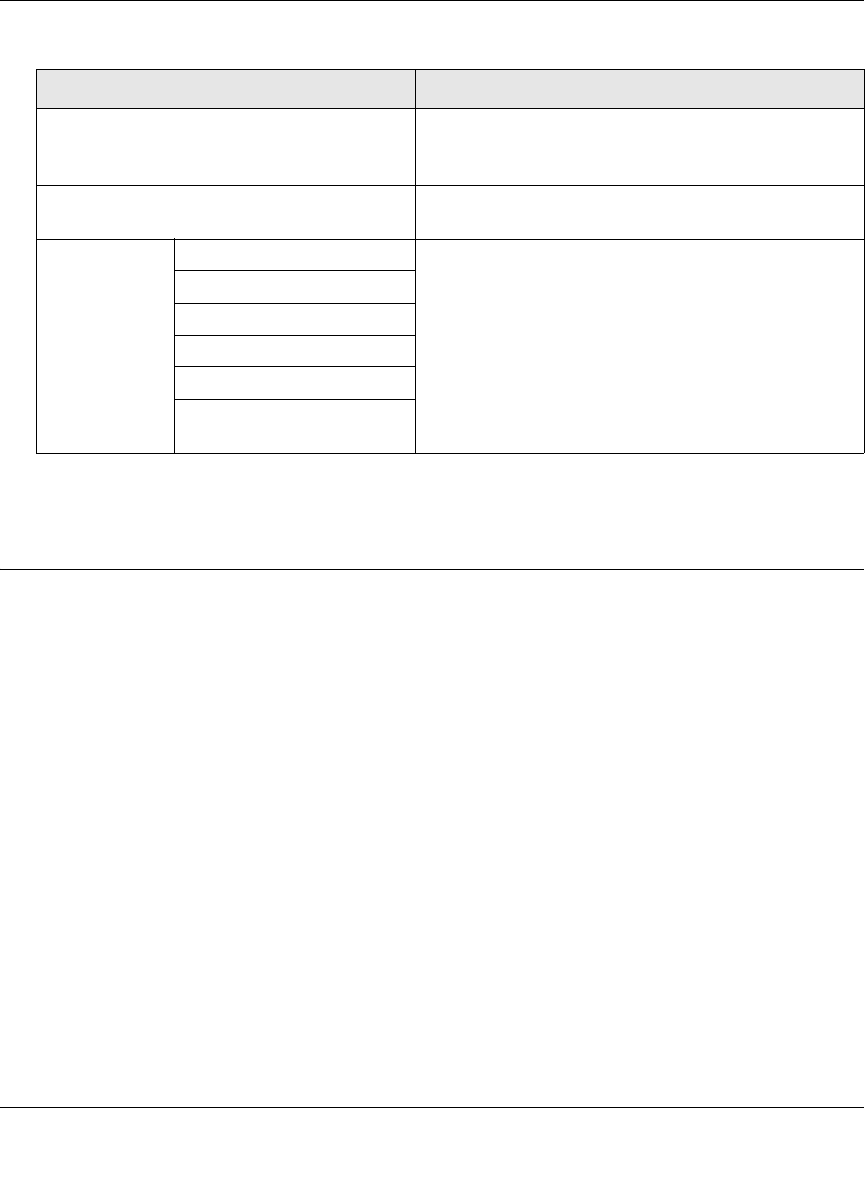
Wireless Cable Modem Gateway CGD24G User Manual
Content Filtering and Firewall Rules 3-5
v1.1, May 2009
3. Click Apply to save your settings.
Firewall Rules—Port Forwarding and Port Blocking
A firewall has two default rules, one for inbound traffic (WAN to LAN) and one for outbound
traffic.
• Inbound Rules (Port Forwarding)
These rules restrict access from outsiders. The default rule is to block all access from outside
except responses to requests from the LAN side. You can use port forwarding to add
predefined or custom rules to specify exceptions to the default rule.
• Outbound Rules (Port Blocking)
These rules control access to outside resources from local users.The default rule is to allow all
access from the LAN side to the outside. You can use port blocking to add predefined or
custom rules to specify exceptions to the default rules.
Configuring Port Forwarding
Because the gateway uses Network Address Translation (NAT), your network presents only one IP
address to the Internet, and outside users cannot directly address any of your local computers.
However, by defining an inbound rule you can make a local server (for example, a web server or
VPN Pass Through When VPN passthrough is enabled, IPSec and PPTP
traffic are forwarded. When it is disabled, this traffic is
blocked.
Multicast When multicast is enabled, the gateway passes
multicasting streams through the firewall.
Web Features Filter Proxy
When enabled, these features are not blocked by the
firewall. When disabled, these features are blocked by
the firewall. You can enable or disable each of these
features individually.
Filter Cookies
Filter Java Applets
Filter ActiveX
Filter Popup Windows
Block Fragmented IP
Packets
Table 3-1. Services (continued)
Settings Description



